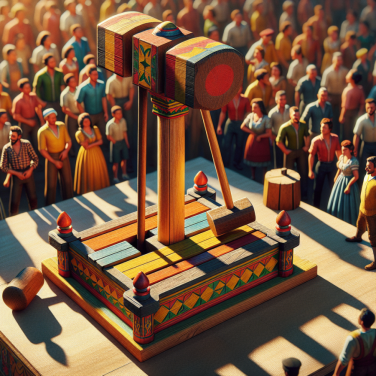Elevating Your Checkers Game: Advanced Techniques and Expert Advice
Expanding your know-how in the game of checkers can transform you from a casual player into a formidable opponent. As your skills progress and you begin to master the foundational strategies and tips, the next step is to explore advanced techniques and seek expert advice to elevate your play. This pursuit of improvement will involve a deeper understanding of piece positioning, control over the board, and the tactical intricacies that dictate high-level matches.
One key aspect of advancing your checkers prowess is to strengthen your opening strategy. The opening moves in checkers set the stage for the entire game. Beyond the basic openings, expert players employ specific sequences that anticipate an opponent's responses. These sequences give you a position that you can capitalize on to assert control. Learn the names and patterns of various well-known openings and study the pros and cons of each.
Control of the center is a recurring theme in many board games, and in checkers, this is no less critical. Having your pieces in the center squares allows for greater mobility and more opportunities to jump your opponent's pieces. It also restricts their ability to maneuver, making it a strategic area of dominance.
Sacrifice plays, when executed at the right time, can be a game-changer. Offering one of your pieces to gain positional advantage or to set up multiple jumps can be worth the apparent loss. The key is to understand the trade-off and to calculate several steps ahead to ensure it leads to a net gain in control or piece advantage.
Furthermore, it is essential to focus on piece development. Moving a variety of your pieces forward, rather than just a few, will avoid the creation of weak points in your formation. This can prevent your opponent from finding vulnerabilities to exploit. Additionally, piece coordination can create impenetrable defensive structures while threatening offensive actions.
The double corner is a concept that players at an advanced level utilize effectively. Controlling both squares of your double corner is a strong defensive position while invading your opponent's double corner can prove to be a powerful offensive tactic.
Expert players also know the value of patience. Sometimes, the tide can turn by simply waiting for an opponent to make an error that can be exploited. This requires you to build a resilient structure with your pieces, minimizing your own vulnerabilities while carefully watching for your opponent's mistakes.
Psychological strategies can also come into play at higher levels.
Read also:
Exploring the Differences and Similarities: Are Soccer and Football Really the Same?
Enhancing Tactical Play in Checkers: Key Approaches and Maneuvers
Checkers, also known as draughts, is a classic board game that requires strategic thinking and tactical proficiency. To enhance tactical play in checkers, players must understand various strategies and maneuvers that can significantly improve their game.
One of the first approaches to improve tactically is mastering the opening. Familiarity with several strong opening moves and responses can set the stage for advantageous positions early in the game. Understanding the standard openings can help players steer the game to positions they are comfortable with, which is crucial for subsequent tactical play.
Controlling the center is another key approach. Much like in chess, dominating the center of the board grants more mobility to your pieces and can hinder your opponent's movements. By occupying the central squares, players can dictate the flow of the game and open up opportunities for tactical maneuvers.
Piece advancement and kinging are also central to tactical play in checkers. Advancing pieces towards the opponent's back row to crown them as kings expands the potential for maneuvers as kings hold significant tactical advantage with their increased range of movement. However, advancing must be done cautiously to avoid leaving pieces vulnerable to capture.
The pinch or pincer move is yet another tactical approach. This involves trapping an opponent's piece between two of your pieces, creating a situation where either way the opponent chooses to move or capture, they will lose a piece. Executing pinches requires careful planning and can be a powerful tool in weakening your opponent's defenses.
Forced captures in checkers create tactical opportunities. Since the game rules require a piece to jump if it can, setting up scenarios where your opponent is forced to make a move that will result in a disadvantageous position or the loss of pieces can turn the tide in your favor. Learning to foresee and setup forced capture chains can be a deciding factor in a game.
The double jump is an essential tactical maneuver, where one piece captures two of the opponent's pieces in a single turn. This not only reduces the opponent's piece count but also positions the jumping piece further up the board, making it a threat for kinging. Players should always be on the lookout for opportunities to execute a double jump or even longer chains of captures.
Sacrificing pieces may seem counterintuitive, but it can be a highly tactical move. A well-timed sacrifice can bait your opponent into a position that allows for a devastating counter-attack or a strategic advantage.




